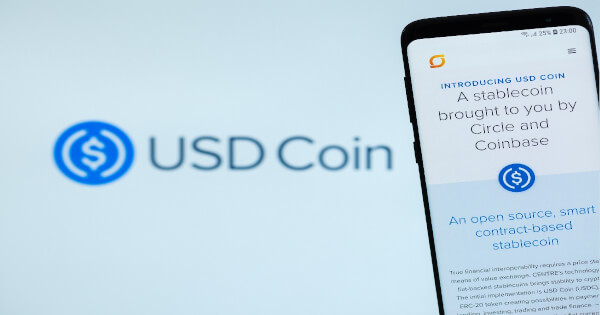Tony Kim
Nov 07, 2025 20:26
Explore the Circle Payments Network (CPN), a global network facilitating real-time stablecoin transactions. Discover its features, operations, and benefits for financial institutions.
The Circle Payments Network (CPN) is emerging as a transformative force in the global financial landscape. Offering 24/7 real-time settlement through stablecoins, CPN is designed to facilitate seamless transactions across borders. According to Circle, this network connects a wide array of financial institutions, including banks, payment service providers (PSPs), and virtual asset service providers (VASPs), to enable consumer, business, and institutional payments.
What Sets CPN Apart?
Unlike traditional payment networks that rely on bilateral relationships and pre-funding, CPN leverages blockchain technology for real-time, programmable transactions. This model not only ensures faster settlements but also introduces a new level of transparency and efficiency. By using stablecoins like USDC and EURC, CPN eliminates the need for pre-funding and batch processing, making it particularly attractive for cross-border business-to-business (B2B) transactions.
Operational Mechanics of CPN
To join CPN, institutions must undergo an eligibility review. Approved members set operational preferences that dictate their participation level and interactions within the network. Originating Financial Institutions (OFIs) convert local currencies into stablecoins, which are then transferred to Beneficiary Financial Institutions (BFIs) for local currency payouts. This process is facilitated by CPN’s smart routing capabilities, which optimize pricing and compliance.
Roles Within CPN
CPN’s structure revolves around key roles: OFIs, BFIs, and a network of service providers. OFIs initiate payments, conduct KYC/KYB checks, and manage the conversion to stablecoins. BFIs receive these stablecoins, convert them back into local currencies, and handle payouts. The network’s service providers offer additional support, such as credit services and liquidity solutions, enhancing the overall efficiency and compliance of the network.
Transaction Dynamics
A typical CPN transaction begins with an OFI obtaining a quote for currency conversion, including fees, which is then approved by the sender. Once the transaction is initiated, encrypted details are exchanged between the OFI and BFI, ensuring compliance and security. The transaction is processed onchain, providing a transparent and auditable trail. Settlement is rapid, with funds reaching the beneficiary in local currency almost instantly.
Cost Structure and Blockchain Integration
CPN’s fee structure is designed to be more cost-effective than traditional networks. Fees are incurred from both BFIs for local disbursement and CPN for network maintenance. Additionally, blockchain transaction fees, or “gas” fees, apply. As of November 2025, CPN supports Ethereum, Polygon, and Solana blockchains, with plans to expand.
Joining CPN
Prospective participants must complete both operational and technical readiness tracks. This involves eligibility reviews and technical preparations like setting up USDC access and connecting to CPN’s API. CPN offers a streamlined path for institutions to expand globally, utilizing a single API to enter new markets efficiently.
In summary, the Circle Payments Network presents a forward-thinking approach to global transactions, combining the benefits of blockchain technology with the compliance and governance standards of traditional finance. As the network expands, it is poised to significantly influence the future of digital payments.
Image source: Shutterstock
